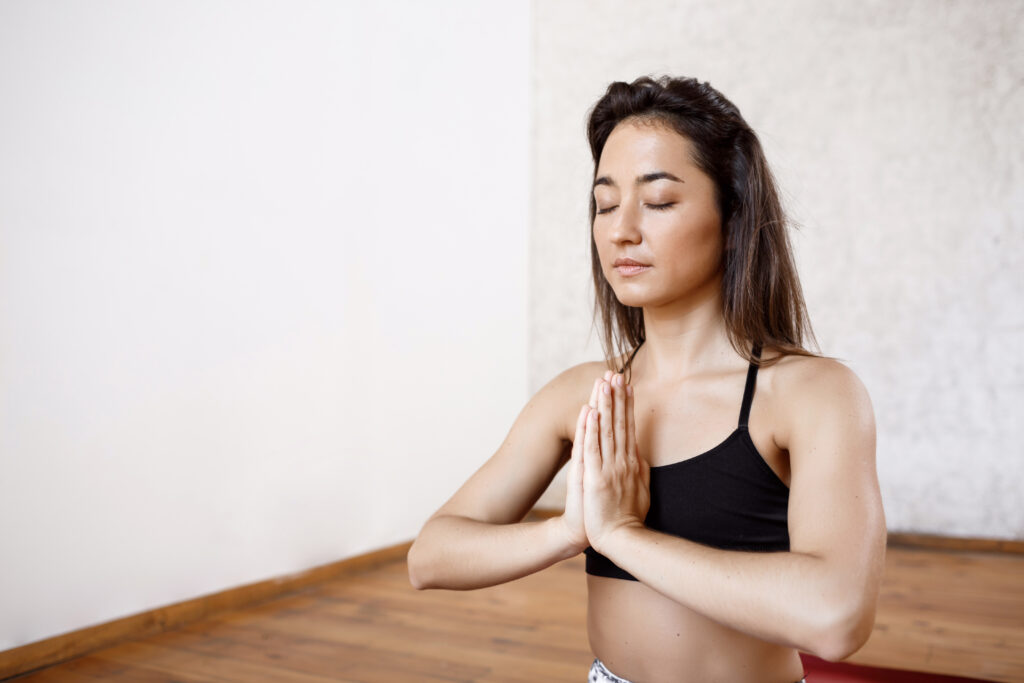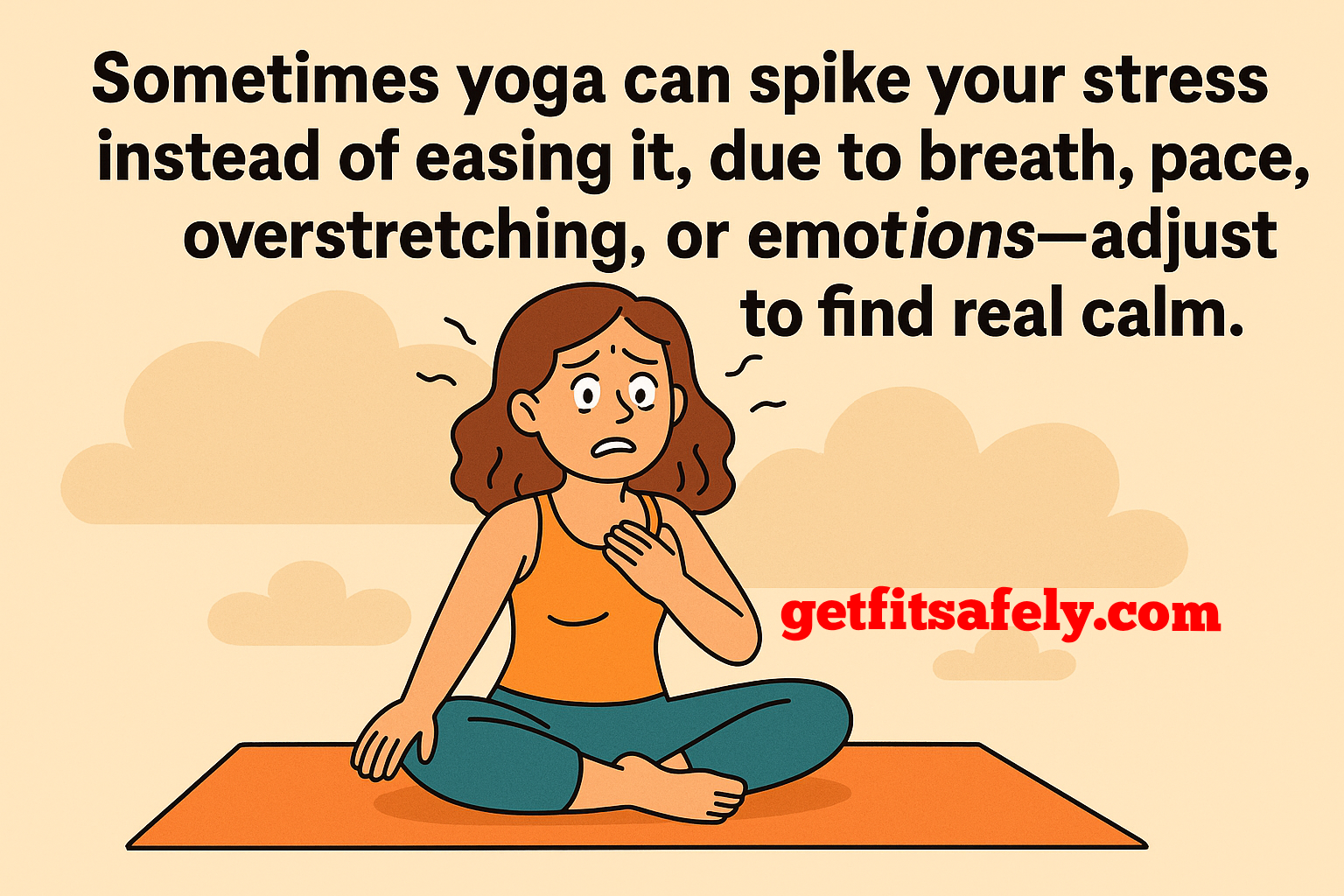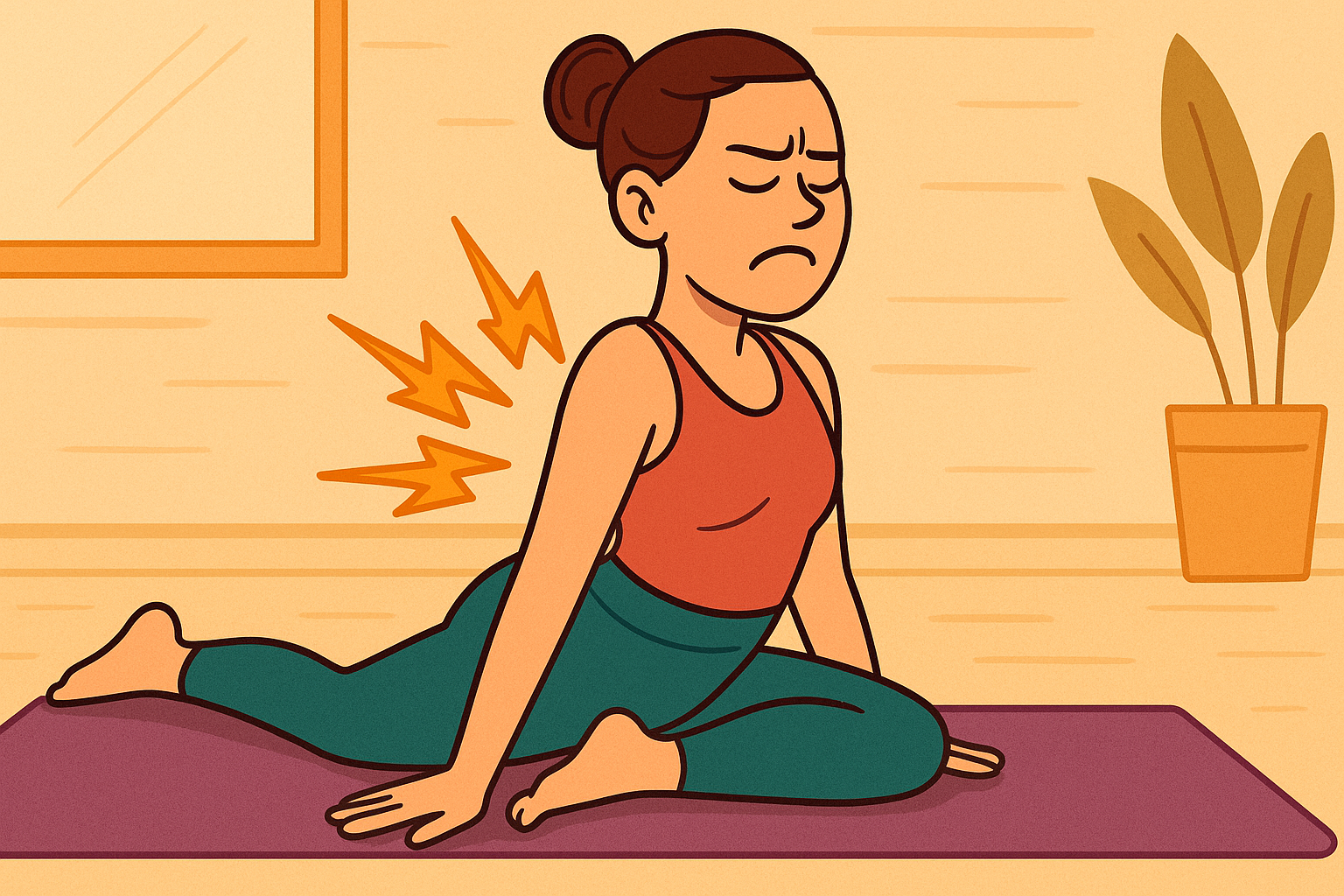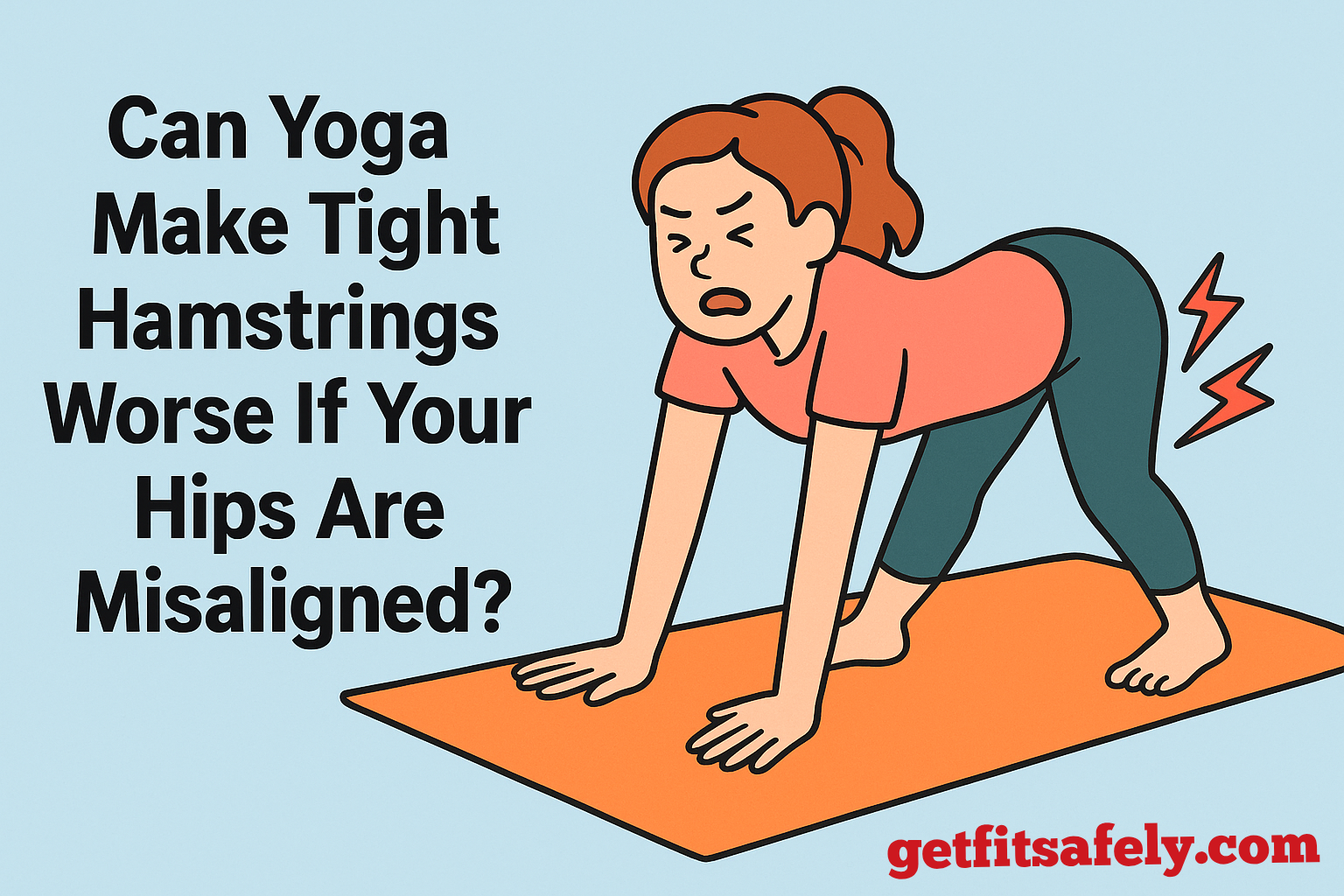Everyone talks about that “magical” post-yoga feeling.
The one where you’re supposed to feel light, centered, and relaxed… almost like you’re floating in a cloud of inner peace.
And yet, sometimes the opposite happens.
You roll up your mat and, instead of calm, you’re left with a pounding heart, a racing mind, and a jittery energy you don’t know what to do with.
It feels like your body is ready to sprint… but all you wanted was to sit down with an herbal tea.
It’s not just you
First thing: you’re not “broken,” and you’re not doing yoga wrong.
The fact that yoga is presented as a universal stress remedy doesn’t mean your nervous system always experiences it that way.
At its core, yoga is still a physical and mental stimulus.
And under certain conditions, that stimulus can switch the body on instead of turning it down.
If you show up already tired, stressed, or with your brain in overdrive, the flow can feel more like an intense workout than a relaxing practice.
When yoga flips on the “wrong engine”

Physiologically, yoga aims to activate the parasympathetic nervous system—the “rest and digest” mode.
But some flows—especially long, dynamic vinyasa sequences—can instead stimulate the sympathetic system, the “fight or flight” mode.
- Lots of chaturangas back to back? Pure intensity.
- Complex balances held for a long time? Stress for the body, even if it’s positive.
- Deep backbends? They open the chest, yes, but they can stimulate the adrenal response.
If your baseline stress is already high, it takes very little to go from “relaxation” to “hyperactivation.”
The breath: the hidden remote for your nervous system

Breath is the main lever you use to tell the body to calm down or gear up.
Here’s the snag: if during practice you breathe too fast, unconsciously hold your breath, or force big inhales without matching exhales, you’re sending your brain the opposite signal of what you want.
In very dynamic classes, it’s common to chase the teacher’s cadence, and the breath gets short, fast, and shallow.
Result? Heart rate climbs, body on alert.
When unexpected emotions surface
Yoga doesn’t just work your muscles—it digs inward.
When you slow down and tune into the body, it’s normal for “on-hold” emotions to surface.
Accumulated stress, emotional tension, or dormant memories can resurface.
If you don’t expect it, that feeling can resemble sudden anxiety.
It isn’t necessarily bad—it’s your body processing—but it can leave you shaken right after practice.
Overstretching and a cortisol spike
Here’s an overlooked angle: stretching too much can be perceived by the body as stress.
If you push past your limits, you can create micro-tears in muscles or overly stress tendons and ligaments.
The body responds with inflammation, and inflammation raises cortisol—the stress hormone.
When cortisol is high, the relaxing effect of practice gets canceled… and you feel “wound up.”
How to turn post-yoga anxiety into real calm
If you want to leave class truly relaxed, try to:
- Lengthen your exhalations more than your inhalations.
- Choose practices with a gradual cool-down that don’t end “on a high.”
- Avoid forcing maximum flexibility every time—it’s not a competition.
- Add a few minutes of meditation or relaxation after class, even if it’s not scheduled.
These tweaks shift the body toward true recovery mode instead of leaving it stuck in “alert mode.”
The role of the vestibular system and your inner balance
Not everyone links anxious feelings to balance, but the vestibular system—which governs stability and spatial orientation—is tightly connected to the nervous system.
During a long yoga session with lots of inversions or rapid position changes (standing, seated, supine), the vestibular system gets constantly stimulated.
If it’s already a bit “overloaded” from fatigue, low hydration, or stress, it can send mixed signals to the brain, which are interpreted as an alert.
Result: a sense of nervousness or anxiety that seems to have no obvious cause.
RELATED:》》》 Why does doing yoga outside make me dizzy but inside I’m fine?
Pre-practice nutrition and hydration: the hidden factor
Training or doing yoga on an empty stomach can work for some, but for others it triggers blood-sugar dips that spark a stress response.
Even mild dehydration can alter heart rate and increase the perception of agitation.
Before a long, intense class, make sure you’ve had enough water and your blood sugar is stable (even a light snack can make a difference).
Mindful micro-pauses during the flow
It isn’t written anywhere that you must match the teacher’s rhythm 100% for the entire class.
If you notice your breath shortening or your mind speeding up, give yourself a few extra seconds in a neutral pose like Child’s Pose or a static Down Dog.
These micro pit-stops let the nervous system recalibrate without stopping the practice.
When calm turns into restlessness: 4 unexpected reasons
1# When silence isn’t as peaceful as it seems
Here’s a curious detail almost no one admits: some super-quiet, static poses can be… too quiet.
If you stay still for minutes with no sound, your body stops sending those micro-signals that help you “feel” yourself in space.
Result? The brain starts looking for something to do… and often pulls from the list of stressful thoughts.
Instead of calm, you end up chasing ideas, to-do lists, and worries you thought you’d left off the mat.
The trick? In static poses, keep a hint of micro-movement—even just a deeper breath or a tiny postural adjustment—to keep the body’s “radar” active without leaving relaxation.
2# When slowing down is harder than running
If you’re used to living at full speed—work, workouts, constant notifications—a super-relaxing practice can make you feel… weird.
The body, which only knows the “gas,” doesn’t instantly recognize the “handbrake.”
That’s why some people feel a kind of restlessness during slower or meditative yoga: the nervous system is readjusting, and it isn’t always immediate or pleasant.
Think of it like stepping off a moving treadmill: the first steps on the floor feel off-balance.
It takes a bit of time to re-settle into a natural pace, and the same goes for calm after a spell of hyperactivity.
3# Fuel matters more than you think
Many forget that yoga is still physical effort.
If you show up on an empty stomach or under-hydrated, your body might not love it.
Blood-sugar dips—or even mild dehydration—can speed up your heart and dial up that edgy feeling.
A light snack and a glass of water 30 minutes beforehand are enough to avoid that “jittery” post-flow that kills the vibe.
If you’re worried about feeling “heavy” before class, go for fruit, yogurt, or nuts—clean energy without stomach fuss.
4# When emotions come knocking
It can happen that just when you think you’re relaxed, a lump in your throat or an unexpected tear shows up.
It isn’t weakness, and it doesn’t mean “yoga is bad for you”—it’s simply your body releasing stored tension and memories.
Sometimes that emotional release is felt as anxiety, especially if you didn’t see it coming.
But in reality, it’s one of the healthiest ways the body clears what you’ve been carrying for a long time.
If it happens, give yourself space to feel it without judgment, and consider that this response is often a sign you’re headed in the right direction.
RELATED:》》》 Can doing yoga right before bed cause insomnia instead of relaxing you?
Conclusion
Feeling anxious after a class doesn’t mean yoga “isn’t for you.”
It means your body is reacting to a certain kind of stimulus, and you can modulate breath, pacing, and the final phase to get the effect you want.
Yoga isn’t just sequences of poses—it’s training in consciously managing your mind-body state.
And once you learn that skill, it becomes a resource you can use in every moment of life.





